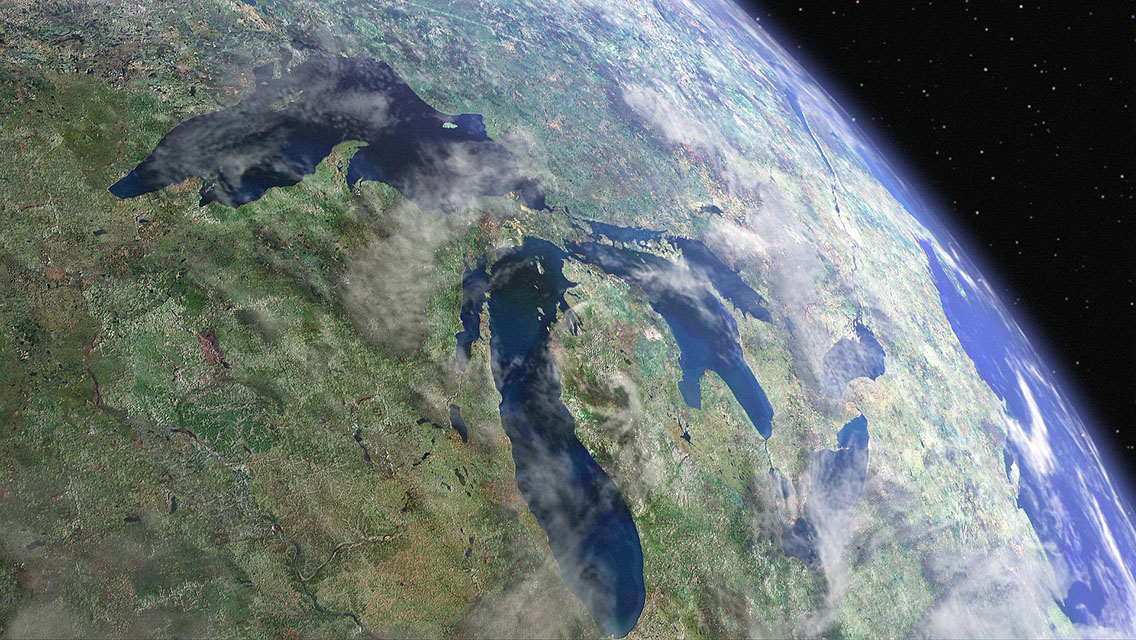In the design world, we have many projects that improve the lives of others. For us, that is why we enjoy our careers.
Rarely, however, do we get a project that truly challenges our capabilities.
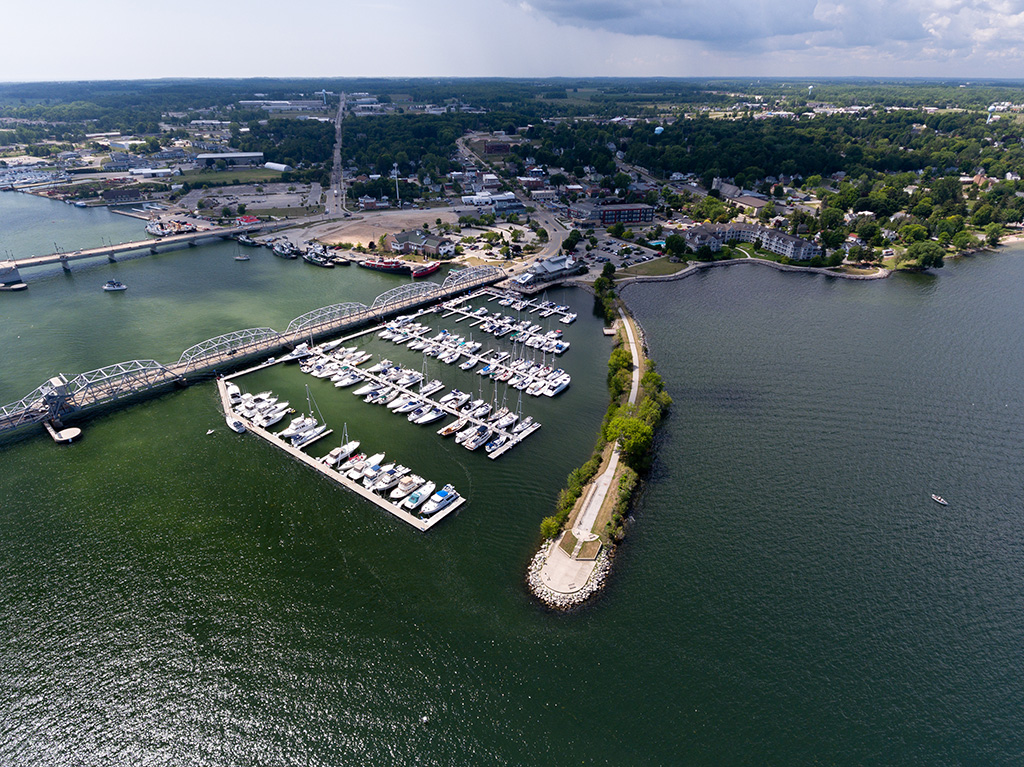
Harbor Club Marina, Sturgeon Bay, WI
Designing a new harbor of refuge on any of the Great Lakes requires an understanding of the immense power associated with such a large body of water. Wind, waves, ice and littoral motion impact any structures we would like to add to the environment.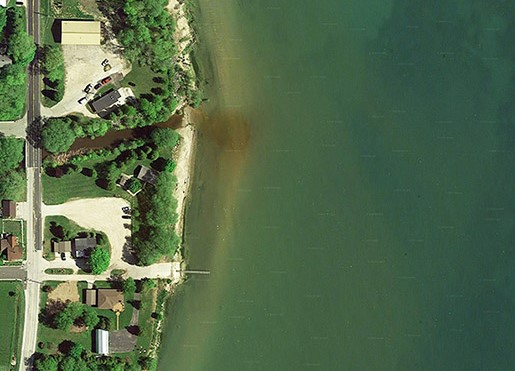
Natural harbors on these lakes have been developed decades ago and the inventory of available sites is scarce. Developing new harbors requires either excavating upland sites or developing breakwaters within the existing lake. In either case, having a solid understanding the local conditions is essential.
Understanding the local conditions
A new harbor of refuge means creating a safe place for vessels to launch and retrieve boats and take shelter, if necessary. These harbors tend to be developed using available geography to minimize cost. Where the local conditions do not provide shelter, a breakwater structure may be needed. These structures require researching environmental conditions such as bathymetry, wind and wave conditions and impacts due to littoral drift. This research extends beyond the project site and must include impacts relating to neighboring properties.
Site upland and bathymetric surveys
Site upland and bathymetric surveys are the starting point to understanding the potential project site. We take GPS recordings and import them into our CAD files to provide maps of the upland site, the riparian neighbors’ sites and the lake bottom for the entire area of interest. Most projects also include analyzing soil borings and geotechnical reports to document the bearing capacities of the lake bottom.
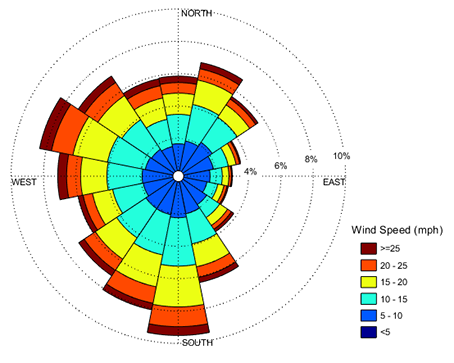
Using a Wind Rose to chart wind speeds
Wind and wave inputs
Wind and wave inputs are generally available through NOAA and these inputs are imported to specialized programs along with the bathymetric data to develop wave profiles for the project. Predicted wave direction will influence the shape of the breakwater as well as the location and direction of the entrance. Wave period (time between peaks) and heights both have an impact on breakwater design. At a certain depth, the lake bottom also affects waves and may cause them to break and decrease their height.
Littoral drift
Large lakes have unseen currents that move sand and sediment laterally along the shore. This littoral drift can create beaches or scour and erode the shoreline. Modeling programs can be employed to help predict the impact of new structures to the littoral movement, but the total impact can change from one season to another. Designers need to assess potential risks and minimize the possible damage.
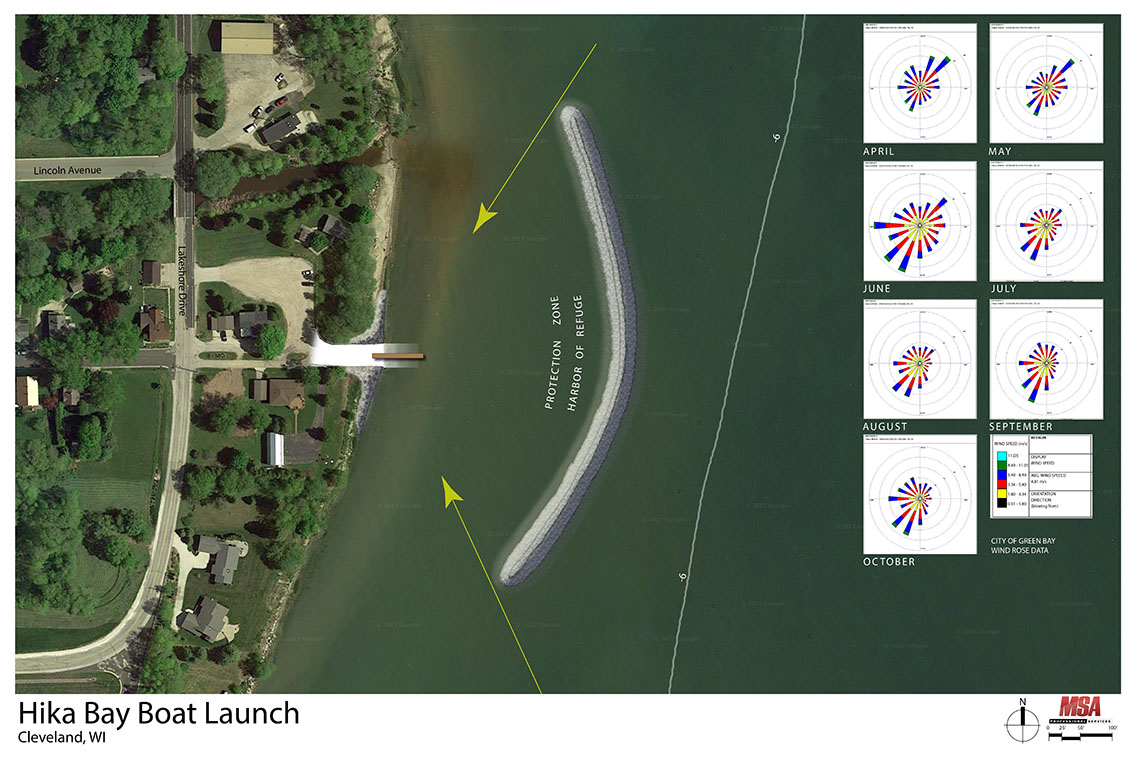
First concept design for Cleveland, WI – Lake Michigan
Riparian rights and site impacts
Owners of lakefront property have legal rights that extend into the water body. These Riparian rights have been the subject of litigation in thousands of cases and have become a significant consideration for any waterfront project. The opinions of the neighbors influence the probability of acquiring permits.
In addition, as with any development project, the potential for historical artifacts, environmental contamination or endangered species must be evaluated and the resulting understandings documented prior to applying for permits. Depending upon the site, these evaluations can be both extensive and expensive. Large projects depend on answering all these questions prior to receiving a FONSI (finding of no significant impact) certification needed to receive permits.
Formulated concept designs
All of this information is needed to formulate initial concept designs. Site locations, connections to the shore, shape of the harbor and orientation of the entrance are all affected by the inputs.
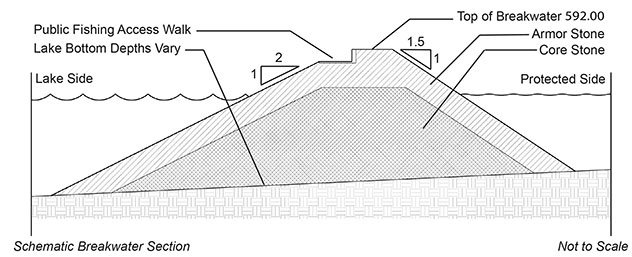
- Breakwater structure heights are determined based on the expected design waves at high water, including potential seiche effects.
- The entrance to the harbor must allow for safe access and prevent hazardous quartering waves from upsetting the boats attempting to enter.
- The basin must be large enough for expected demand and deep enough to prevent grounding during seiche conditions.
- Where uplands are to be excavated to create the harbor, connections to deep-water access often requires development of a channel and protection of the entrance from sedimentation.
After the selection of the final design, the reward comes in seeing the new harbor of refuge to fruition. With the number of challenges that accompany these projects, the development of a new harbor on the Great Lakes is a remarkable project and justifiably proud achievement.
This article was authored by former MSA Senior Project Manager, Bruce Lunde. Curious to learn more about our marina and waterfront expertise? Connect with our Parks and Recreation or Landscape Architecture experts today!
